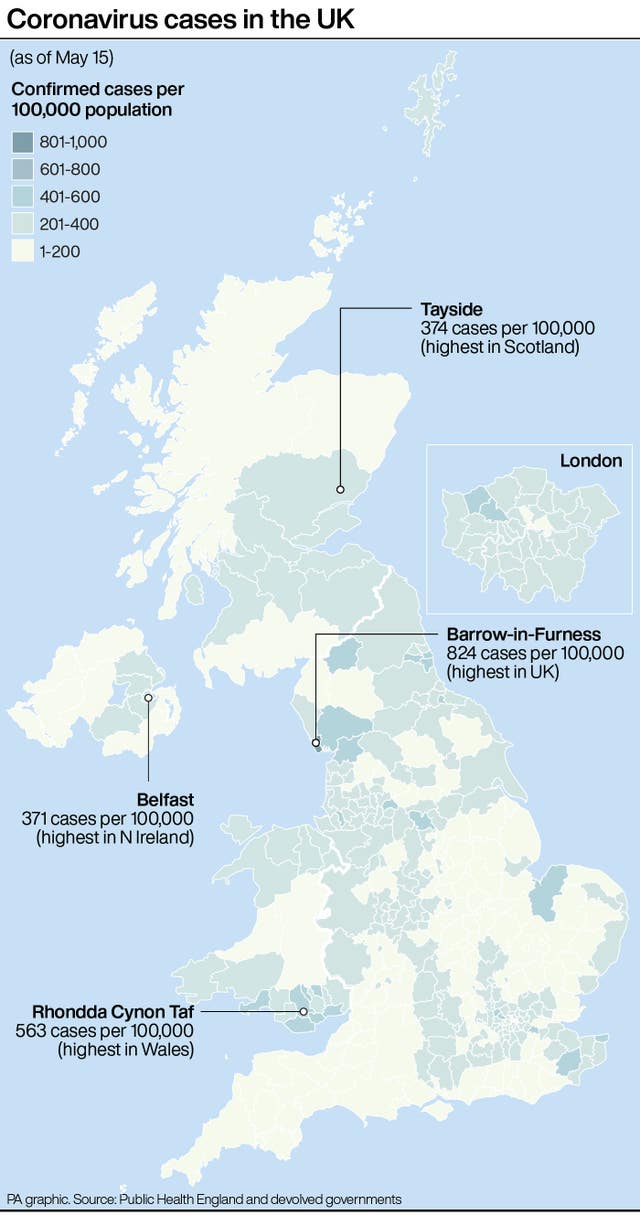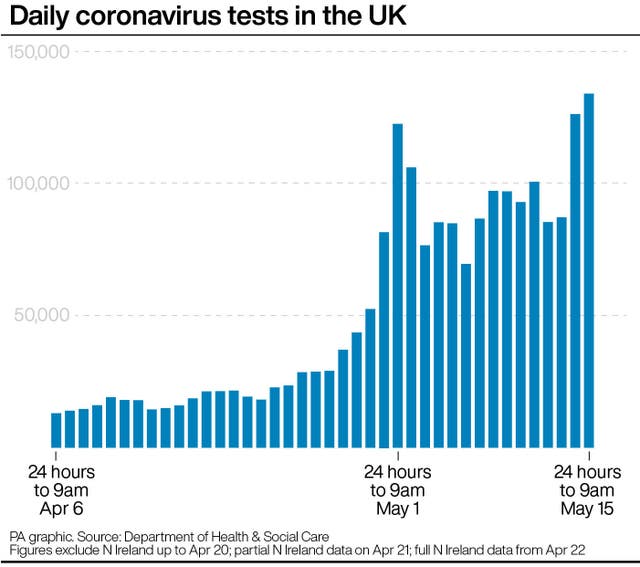Coronavirus Q&A: What is the R value?
If it is greater than one, the infection will ‘spread exponentially’, scientists say.

When scientists are faced with a new epidemic, they must act to understand how quickly it spreads.
They do this by estimating the basic reproduction number called the R0, or R nought, which reflects how infectious a virus is.
The rate of coronavirus infection in the UK is one of the key measures being assessed by experts and officials when deciding whether to ease lockdown measures.
– What is the R0?
It is defined as the average number of people an infected person can expect to pass the virus on to before any widespread immunity or attempts at immunisation are made.
For example, if one person develops an infection and transmits it to two other people, the number would be R2. The higher the number, the faster it progresses.
If it is greater than one, the infection will spread exponentially, but if it is lower than one, it will spread slowly and eventually die out, according to the Centre for Evidence-Based Medicine (CEBM) at Oxford University.
Officials in the UK have said the easing of lockdown measures depends on the R value staying below one and it is one of the Government’s five tests it says must be reached before restrictions are adjusted.
– What is the R0 for coronavirus?
The World Health Organisation (WHO) estimated at the start of March that the R0 was between 2 and 2.5, but estimates from different studies vary widely.
According to nine studies in China and South Korea between December and March, the mean estimated R0 was 2.63, the CEBM said.

An Imperial College London study widely seen as influencing the Government’s lockdown measures predicted around 490,000 deaths in the UK with a model using an R0 of 2.4.
By comparison, measles has an estimated value of more than R14 while smallpox is almost R6, the CEBM said.
– What is the rate of infection now?
As of May 15, the R value in the UK is estimated to be between 0.7 and 1.0.
This is a slight increase from the week before when the R value was thought to be between 0.5 and 0.9.
The rise is thought to be driven by the virus spreading in care homes, and the data does not take into account the easing of lockdown measures that began from May 13.
Strict social distancing measures, including encouraging people to stay at home and not use public transport, are cited as ways to reduce transmission of the virus.
Experts are confident that overall the R is not above 1. This means that the number of infections is not increasing, and is very likely to be decreasing.
– Why has the estimation gone up?
Prof Rowland Kao, Sir Timothy O’Shea professor of veterinary epidemiology and data science at the University of Edinburgh, said fluctuations in the value are to be expected.
He explained: “It could for example experience a temporary rise because of the introduction of a random case into a new area but then decline again as the R in that particular location starts to decline.”
He said it was important to emphasise the “overall trend, rather than a single point estimate”, saying increases in R mattered more if the prevalence of cases was high.
– How is the R value estimated?

R is estimated by a range of independent modelling groups based in universities and Public Health England (PHE) who build complex mathematical models that simulate the spread of infections.
Their estimates are presented to the Science Pandemic Influenza Modelling group (SPI-M) – a subgroup of the Scientific Advisory Group for Emergencies (Sage) – for discussion and agreement on a likely R range.
Different modelling groups use different data sources, which can include hospital admissions, ICU admissions, deaths and household infection surveys.
– What are the limitations of R?
There is a delay of two to three weeks in compiling relevant infection data because there is a lag between people becoming infected, entering hospital, and dying.
Therefore there is no real-time figure for R, as it reflects the situation around three weeks prior.
R is also an average value that can vary in different parts of the country, communities, and sub-sections of the population.
It cannot be measured directly so there is always some uncertainty around its exact value.

– How important is estimating R?
Health Secretary Matt Hancock said that R is “an incredibly important figure for policymakers but it is one data point to look at alongside the level of new cases”.
Experts say R indicates whether the epidemic is getting bigger or smaller but not how large it is.
They say it should always be considered alongside the number of people currently infected.
Deputy chief medical officer for England Dr Jenny Harries said it was a “really important measure” but “the real outcome that we are looking for is a reduction in the number of cases and getting rid of the epidemic in the UK”.
She added: “So that is our focus, not R. R is a representation of what is happening in that fight.”





